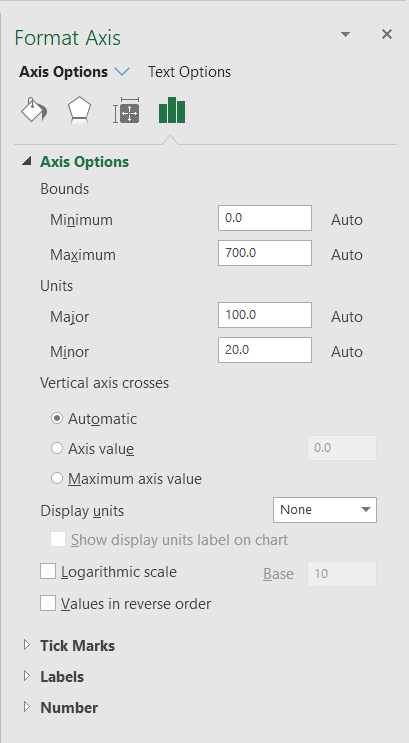
Other chart types use the X axis for categories of information, not numeric values. Its not obvious, but you can type arbitrary labels separated with commas in this field. Click the edit button to access the label range. Here youll see the horizontal axis labels listed on the right. Instead youll need to open up the Select Data window. So why do you need to use a scatter chart for log/log data? Because it is the only type of chart that allows numeric values along the X axis. You wont find controls for overwriting text labels in the Format Task pane. You should note that this solution will work for many types of charts, but won't work for charts where you need to plot zero or negative values. If, for some strange reason, values along the X axis are still not represented in logarithmic scale, you can click on the X axis, choose to format it, and then specify a logarithmic scale. Select the sub-chart type you want to use.Excel displays a palette of available chart types. Click the Change Chart Type tool in the Type group.(This tab is only available if you select the chart area, as instructed in step 1.) Make sure the Chart Design (Design in earlier versions of Excel) tab of the ribbon is visible.To specify a chart where you can use logarithmic scales on both axes, follow these steps: It seems that Excel will not allow the X axis to use a logarithmic scale for many types of charts.

The answer to this conundrum is to change which type of chart you use for your data. For some types of data, you may want to create a chart that is not readily apparent. Excel is great at automatically creating a wide variety of charts, lickety split.


 0 kommentar(er)
0 kommentar(er)
